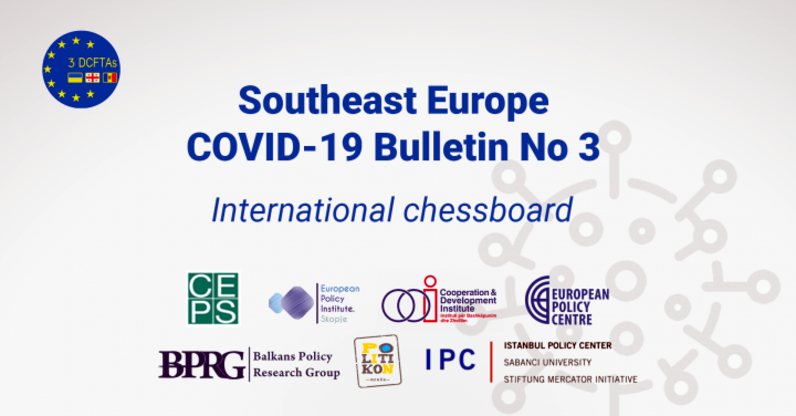Back to normal?
In this third bulletin, we provide an update on the latest developments on the rates of infection and mortality arising out of the pandemic in the region, the general easing of restrictions, as well as the range and extent of international assistance.
As most EU member states embark on a gradual lifting of lockdown measures, and focus on efforts to mitigate the economic fallout from the pandemic, the SEE countries are facing increased challenges from a worsening economic situation combined with in some cases electoral pressures and a rise in Covid-19 infections.
The support and direct assistance already announced by the EU for the SEE countries will play a critical role in helping to mitigate the worst effects of the pandemic at a time when EU related reforms have in most cases taken a back seat.
Epidemiological evolution
As we review the latest developments with Covid-19 in the SEE region, a mixed picture emerges ranging from zero increase in infections in the case of Montenegro to infection rates under control in most countries, but with upward trends in both Albania and North Macedonia. The difference is that the increases in these two cases appears to be confined to localised clusters linked to religious celebrations and/or the textile industry. Testing capacities as well as tracking and tracing procedures will be critical in determining whether these increases can be controlled in the coming weeks.
Unwinding strategy
The easing of lockdown measures has continued throughout the region. However, in the case of North Macedonia the resurgence of infections could result in a re-imposition of curfew measures in the capital city and other localised areas, while the technical government in place has been criticised for its perceived failure to ensure observance of lockdown measures and allowing electoral considerations to determine its approach.
In the case of Turkey, the government has been criticised for giving priority to economic considerations in advancing the timing for the easing of restrictions, and opening the door for a possible second wave.
Foreign aid and geopolitical (re-)positioning
With the exception of Turkey, the EU is confirmed as the largest donor to all the countries of the region. While in some cases, such as in Serbia, the EU was criticised for its initially slow response and delays in lifting export restrictions of medical supplies, the support and direct assistance announced by the EU in the course of May has received wide recognition and appreciation. It has included not only medical equipment but also direct grants and loans to assist the countries in their economic recovery plans. The support from the EU has been complemented with direct assistance from a number of EU member states and other European countries such as Switzerland and Norway.
A key challenge facing the region will be the manner and speed with which the aid is implemented, in particular the preparation of suitable project proposals, where, as in the case of Albania, the national administrative capacity remains weak.
With the exception of Kosovo, China has been active in providing assistance to all of the countries mainly in the form of medical equipment and protective clothing. However, even in those countries such as Montenegro. Bosnia and Herzegovina and Serbia where Chinese investments are already substantial, the level of assistance provided for the pandemic was comparatively modest and without much publicity, with the exception of Serbia where the President made a big show of welcoming the Chinese shipments.
With the dramatic situation arising out of the pandemic in Russia, it is probably not a surprise that assistance to the region was both modest and mainly limited to its ‘traditional’ partners, such as Republika Srpska and Serbia.
The US meanwhile was also active in providing assistance, mainly in the form of direct grants, some of which was channelled through international organisations.
In terms of assistance from the region itself, while the proactive role of Turkey in providing assistance to some 80 countries was to be expected, the direct support provided by Albania in the form of a team of doctors dispatched to the Bergamo region in Italy is noteworthy, as was Serbia’s gesture of sending some medical equipment to Kosovo.
Finally, it is clear from the assessments below that the EU related reform programmes have suffered over the past months in the region. There has been either a slowing down of much needed reforms as in the case of Albania or Montenegro, even if the government there has accepted the new methodology for accession negotiations, or no movement at all, as is the case in North Macedonia where the technical government remains in place in preparation for the early elections, for which a date has yet to be set. A bright spot could be Bosnia and Herzegovina where the President of Republika Srpska, a traditional euro-sceptic, launched an initiative for implementation of the reforms set out by the EU last year, although it remains to be seen what practical impact this will have.
Read the full bulletin here.
This publication is prepared within the framework of the CEPS-led ‘3dCFTAs’ project, enabled by financial support from Sweden.

